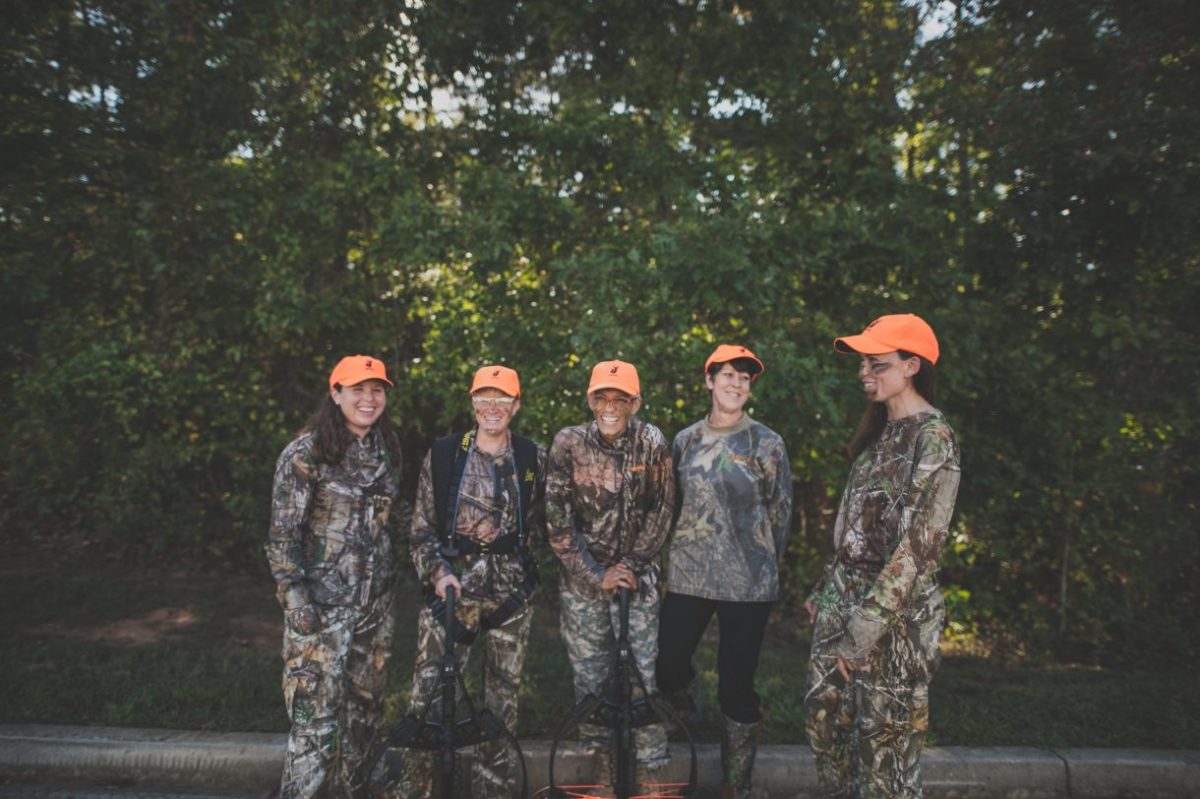That humans are born with an innate drive to hunt is what Hank Forester believes. If he’s right, this natural desire is one that has largely been ignored.
According to the most recent data from 2016, the national participation rate for hunting is just 4 percent of the U.S. population.
“I think humans, you could argue, have a hunting heritage or history that we’re not in tune with and are disconnected from,” says Forester, who is hunting heritage programs manager for Quality Deer Management Association (QDMA). In this role, he focuses on recruiting, retaining and reactivating hunters — a model known as R3 — to address declines in hunting participation and encourage more of it.
Between 2011 and 2016, hunting participation decreased by approximately 2 million people, representing a 14.8 percent drop, according to the U.S. Department of the Interior (DOI). Many attribute this decline to baby boomers — the generation with the highest hunter participation — who are beginning to age out of the sport. However, Forester also cites urbanization and the migration of people from rural areas to more urban ones as a contributing factor. Minus the convenience factor, engagement in the sport becomes more difficult. “[It’s] not something that’s out your backdoor,” says Forester.
Yet according to Zachary Lowe, vice president of the Center for Conservation Leadership and director of the Conservation Leaders for Tomorrow Program at the Max McGraw Wildlife Foundation, the issue of hunter participation may be more of a problem of ratio.
“The reality is, the percentage of new hunters has not increased at the same rate as total population growth over time,” he says. “But that doesn’t mean that hunters as a whole — their total numbers per year — are necessarily declining as precipitously as it might seem when you just look at the percentage numbers.”
Regardless of how much hunting participation has decreased or the reasons for it, fewer hunters is something everyone should regard with concern. Without even the small segment of hunters that now exists, funding for wildlife conservation would be severely reduced.
“It’s about showing people what hunting really is and not what it is on [some] hunting TV show or in the media when they highlight some bad apple.”
Unbeknownst to many Americans, the majority of funding for wildlife conservation in the United States comes from hunting license sales and a little known tax created by what’s best known as the Pittman-Robertson (P-R) Act. Signed into law by President Franklin D. Roosevelt, P-R — more formally known as the Federal Aid in Wildlife Restoration Act of 1937 — instituted an 11 percent excise tax on firearms, ammunition and archery equipment. Money collected from this tax is distributed to the states, which can spend it on the management of wildlife and habitat, research, surveys or the acquisition or leasing of land.
Yet expenditures by hunters have also declined in recent years, with such purchases decreasing 29 percent between 2011 and 2016, according to DOI data.
“Right now, the majority of [conservation] funding — 58 percent on average at the state level, and in some states it’s as high as 92 percent — comes directly from the consumptive uses of wildlife. That gets turned around, and all wildlife benefit from that,” says Lowe. “That is a story that we need to tell better. That’s why we should all be concerned with what the future of hunting … looks like.”
In 2018 alone, the U.S. Fish and Wildlife Service (FWS) distributed $1.1 billion in P-R money to the states. Since the passage of P-R, the agency has allotted more than $20.2 billion for conservation purposes.
Increasing hunter participation, however, is about more than just recruitment and retention; it’s also about increasing societal acceptance of hunting, says Forester. “It’s about the outreach. It’s about creating advocates,” he says. “It’s about showing people what hunting really is and not what it is on [some] hunting TV show or in the media when they highlight some bad apple.”
Food-Focused Hunting
For Forester, a large part of the enjoyment he derives from hunting has to do with the satisfaction that comes from sustainably sourcing his meat. “If you want to talk about local and sustainable, there’s nothing better than whitetail deer,” he says.
Recognizing this draw to hunting and public approval for hunting for food, Forester saw an opportunity to attract a new crowd to the sport.
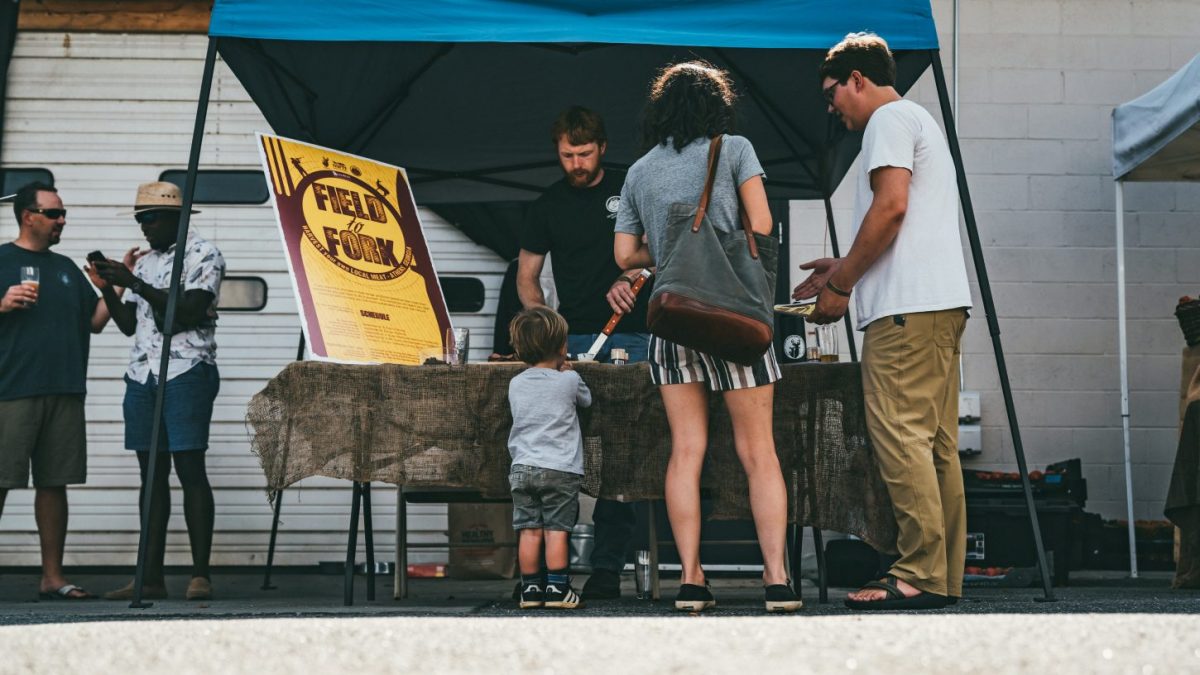
“Over 80 percent of Americans approve of hunting deer and turkey for food,” he says. “[We] have this huge approval rating, yet only 4.5 percent of Americans are doing it. That tells me there’s this low-hanging fruit, and to me, food-focused hunters are the way to go. It’s hunting at its purest form, and it’s something that you can really present well.”
While many current hunters value and engage in this aspect of hunting, Forester has demonstrated that the concept of sustainably sourced food can be a great marketing tool — not to mention an effective way to diversify the sport.
“We need to remain relevant in society, and we need to diversify because hunting is still mainly a middle-aged white guy and older activity. We know that the demographics of this country are [changing,] so we need to introduce hunting into these new groups that are interested.”
At a booth at the local farmer’s market, Forester is transforming curious meanderers into prospective hunters with one simple question: “Would you like to try some venison?”
“They’re going to take me up on it — even vegans and vegetarians,” he says. “If it’s wild game, it’s a different box in their brain.”
Called Field to Fork, this QDMA program — launched by Forester in 2014 — invites people who have perhaps never hunted before to participate in the sport by tasting its spoils. With an audience that cares about where its food comes from, the appeal is natural.
“[I tell people,] ‘This deer that you just tasted came out of this county, just over there. I processed it myself. I cooked it this afternoon. You’re trying it, and it’s delicious,’” Forester says. “I can say, ‘Hey, would you like to try this, and we’ll put 50 pounds of venison in your freezer?’ That’s powerful.”
Forester and his team do this every year: sit at the farmer’s market for four to six weeks in the summer as people sign up to join QDMA on an organized hunt. “We usually fill up fairly quickly,” says Forester. In the first year alone, the program’s eight slots filled up in less than an hour. “By the end of that day, we had a waiting list,” he says.
QDMA pairs each participant with a local hunter who serves as a mentor and offers equipment such as crossbows or ground blinds to those who need it; Forester says crossbows were selected for their “palatability” and due to the length of archery season. These prospective hunters go through training to learn how to shoot and break down an animal — and ultimately share a few beers and a venison meal. The program culminates in a hunt.
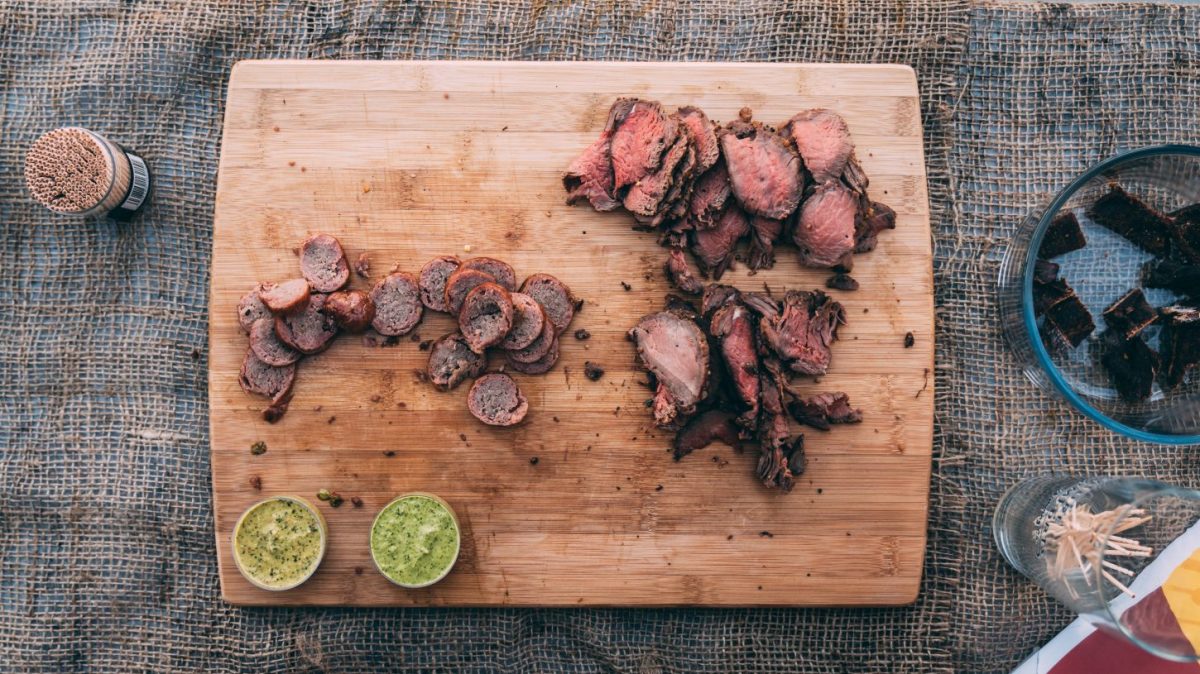
“We’re doing a very thorough job of teaching them the knowledge they need on the front end, making them comfortable, taking them hunting and continuing that social support,” says Forester.
Although he says a minimal number of deer have been harvested through Field to Fork hunts over the years, QDMA is seeing 80 percent of these newcomers continue hunting within their first year. “I don’t think any other hunting program’s ever seen that,” Forester says.
Because Field to Fork is easily replicable — which was intentional on Forester’s part — it has now been duplicated in 10 states.
Another benefit of the program, as Forester is finding out, is that these new hunters are very responsible and often become great advocates for the sport. “They don’t want to waste an animal’s life or meat, so if they’re not confident that they can take care of it or have somebody on speed dial to come help them, they’re not going to go again,” Forester says, adding that they are “more inspired to mentor and to share their story and their venison.”
Addressing Challenges & Capitalizing on Successes
When it comes to improving hunter recruitment, Lowe stresses the importance of research, data and analysis. Knowledge of the barriers faced by different groups to entering the sport as well as some of the factors that have led to the successful recruitment of new hunters is key to setting specific goals and assessing progress.
“We should always compare the results with their intended outputs,” says Lowe. “You can always make social good, you can always make somebody more aware of some part of conservation — having a bunch of people go through a try-it day for fishing, for example, [where] everybody has a good time and leaves. There’s benefit to that, but if your [goal] was to create X number of new anglers from that, and you never track it or know the results, was that successful or not?”
“We spend an incredible amount of time and money with recruitment and retention — money that is well-intended and sometimes well spent — but sometimes, we offer programming that maybe is not as effective as it could be,” he adds.
This is why Lowe believes it’s important to determine what has worked in the past and create programs that mirror those. But, he says, it’s also critical to identify where the challenges lie. This is an area in which he thinks case studies can have a significant impact.
“The process is largely the same, but some of the hurdles, some of the things they have to overcome in order to become a recruited and retained hunter, are higher than they would be for a non-Hispanic.”
Lowe and Jim Curcuruto, director of research and market development for the National Shooting Sports Foundation (NSSF), and Bob Byrne of Bob Byrne Consulting conducted one such case study a few years ago. Seeing an opportunity in the country’s rapidly expanding Hispanic community, they set out to determine what factors have contributed to the successful recruitment and retention of hunters from this ethnic group.
Using state hunting license data, which they disaggregated for Spanish surnames, Lowe and his colleagues analyzed license purchasing trends among this group. They looked at data for a seven- to 10-year period (however, some states only had five years of data) from sample sites across the country.
“What we really wanted to do was to identify those individuals who maybe over a 10-year period bought a license in year three for the first time,” Lowe says. “Then, in year four, they bought a license and a turkey tag; then, in year five, they bought a license, a turkey tag and an elk tag — depending on the state — so that there was some sequence of use that would indicate this person had recently been recruited and then successfully retained.”
After randomly selecting a group, Lowe’s team screened these individuals to ensure they self-identified as both Hispanic and as hunters. Using the Outdoor Recreation Adoption Model for R3, they then asked those who self-identified a series of questions to “track their path through the R3 process,” Lowe says.
“We applied that as the overlay and said, ‘We want to know what your obstacles were. Who first brought you into this? What were your first successes? What were your greatest challenges? We identified their personal experience and tried to capture that,” he says. They also asked them what they thought the barriers to hunting were for other Hispanics.
Ultimately, Lowe says the results indicated that “the barriers and the process by which Hispanics become hunters is not altogether different than any other group.”
“There’s no reason why their motivations, their involvement and their desire to become part of this is really all that different than anybody else who might come into it,” he says. However, he notes that some of the hurdles they face are higher. “The process is largely the same, but some of the hurdles, some of the things they have to overcome in order to become a recruited and retained hunter, are higher than they would be for a non-Hispanic — the most obvious of which is language, particularly if they were first generation or immigrant.”
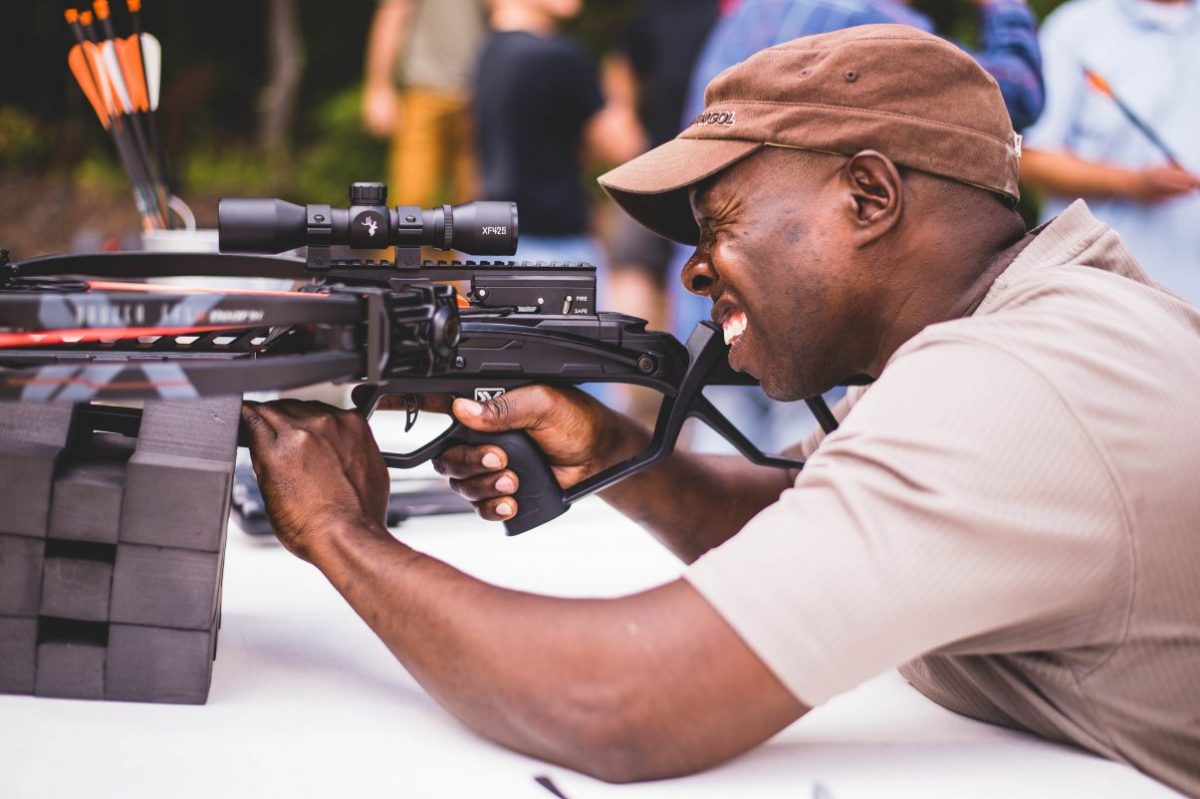
He notes that while many states target Hispanics in their recruitment efforts, a large number of those either do not offer hunting information in Spanish, or such materials are not easily accessible on their websites.
“If you were a state agency that actively wanted to recruit Hispanics, then I think it would be strikingly obvious that having your regulations and, say, your hunter education manual written in Spanish would be a no-brainer,” says Lowe. “But many states don’t.”
The case study also revealed some social and political hurdles to hunting among some in the Hispanic community — for example, the concerns associated with being a young Hispanic man with a gun, hunting public lands along the U.S.-Mexico border. However, Lowe argues that what truly sets individuals apart with regard to the decision to pursue hunting is motivation.
“We understand that the motivations of hunters are often very different,” he says. “The motivation for why a woman wants to go out and hunt on her own for elk in the Rocky Mountains, for example, and what she derives — the inherent personal value of that experience — may be entirely different than [what] a male [derives] for a lot of different reasons.”
According to Lowe, one-third of all hunters were not raised on the sport, which he says presents another area of opportunity, particularly among young adults.
“One-third come to [hunting] in early adulthood, once they’re out of college; they have disposable income, they’re on their own,” he says. “Maybe the idea of hunting wasn’t a popular idea among their household, maybe the idea of gun ownership wasn’t a popular idea with mom and dad, but the individual always had the motivation or the interest, and now that they’re on their own, those barriers are no longer what they once were.”
QDMA is setting its sights on these young people through a relatively new program — funded by a grant from NSSF — targeted at college students who have never hunted before. The organization partnered with the University of Georgia’s (UGA) Warnell School of Forestry and Natural Resources to launch the pilot program, which allowed students to hunt squirrel in the spring and deer in the fall on UGA property.
Forester says the program has since expanded to Clemson University and others.
“It’s the Field to Fork model, but it’s built around a university,” he says. “It’s the most sustainable program I’ve ever been involved with. It is working because their peers are taking them hunting.”
“We really need hunters to understand that the biggest thing they can do for the future of hunting is invite somebody new and mentor a new hunter.”
For these students, this program also helps address another challenge that many people, especially those in the East, face on the path to hunting participation: access. According to data from FWS and the U.S. Census Bureau, of the 11.5 million people who hunted in 2016, 3.9 million hunted on public land compared to 9.7 million who hunted on privately owned land.
In Georgia, specifically — where QDMA is headquartered — 90.3 percent of land is privately owned. For Forester, this demonstrates the importance of inviting others to hunt with you.
“You go west, it’s way different. But [in the East,] the majority of hunting is private land, so we really need hunters to understand that the biggest thing they can do for the future of hunting is invite somebody new and mentor a new hunter,” says Forester. “Everybody gets caught up in access as a reason why hunting is declining. There’s a little bit to that, but there’s nothing we can do to fix it except … say, ‘Hey, come over to my place’ or ‘come sit in my deer stand.’”
This approach is the basis for NSSF’s +One Movement, which encourages current hunters to take someone new hunting this year. Although the idea behind the movement — mentorship — is nothing new Curcuruto says the goal is to dismantle the “connotation that mentoring has to be an old person and a young person.”
“+One can be an old person bringing an old person or a young person bringing a young person or a young person bringing an old person,” he says. “[It’s] just [that idea of] bringing somebody out, inviting somebody … to the field to share what you enjoy doing.”
To support this effort, NSSF created a +One toolkit that includes logos, photos, social media content, digital ads and PSA scripts for its 10,000-plus members to use. Consistency of messaging across the industry, including firearm manufacturers, retailers and ranges, helps enhance the movement’s impact, Curcuruto says.
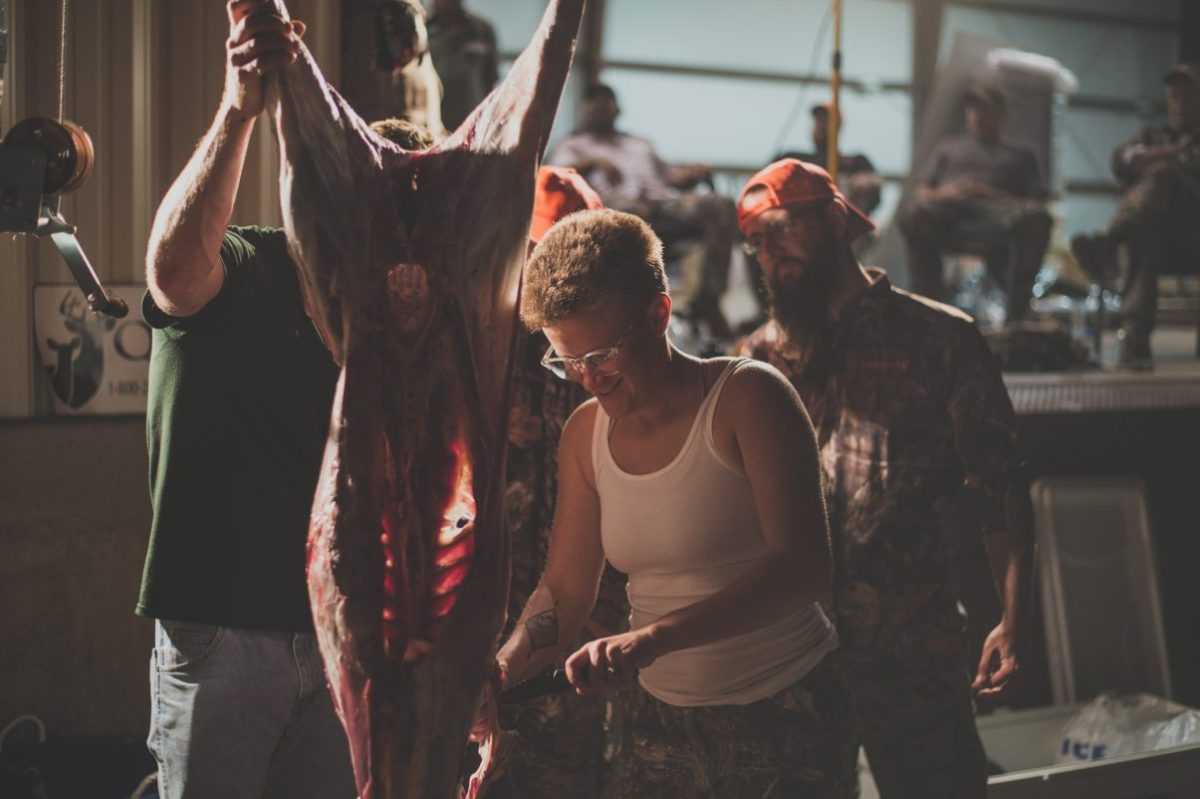
NSSF’s R3 efforts have also focused on information. The organization’s new “Let’s Go Hunting” website is a direct attempt to reduce some of the hurdles to hunting participation. It features videos for hunters at every level, from beginner to expert, on topics such as how to sight in a rifle; articles about different hunting activities and game species; information about hunting requirements and regulations by state, licensing and permits, where to take hunter education classes and where to hunt; and tips for new hunters.
Charting a Course
Yet even with all of these initiatives to recruit and retain new hunters, Lowe says it is critical that an effort be made to engage them throughout the process.
“We know for sure it’s not a one-and-done approach,” he says. “It’s not this process by which we throw everybody in the big end of the funnel and shake it around until somebody comes out the other end and we call them a hunter. We really ought to know where we need to chart a course from step A to step B to step C and realize that, for different groups, that course may be a little different and there may be different barriers.”
Forester emphasizes the importance of meeting prospective hunters where they are, as QDMA has done through Field to Fork. “We’re making a diligent effort to go to them. I’m not asking this person to come to a hunting website that they don’t even know exists,” he says. “You’re never going to recruit hunters off a state agency website.”
While it’s obvious that strides have been made to increase hunting participation, there is much work that remains to improve processes. Forester points to some of the requirements around hunter education and safety as barriers to entry, as some states don’t offer these classes online or make them excessively long. Additionally, not all states offer apprenticeship programs through which those interested in hunting can forego hunter education for two years as they hunt alongside a licensed mentor.
With regard to increasing dollars for wildlife conservation, Forester thinks states need to reconsider how many free licenses they give away. “[Offering] free senior citizen and military personnel hunting licenses — in theory, they pull our heart strings, and they make us feel good,” he says. “But [the state agencies] are just missing out on money.”
“It’s an interesting point that we’ve gotten to, but I think things will change — and it might not be for the better.”
P-R, however, may soon get a facelift. An updated version of the legislation was introduced in Congress last fall, which would allow states more flexibility on how they can use P-R funds, specifically allowing some to be used for the recruitment of new hunters.
“It’s an interesting point that we’ve gotten to, but I think things will change — and it might not be for the better,” Forester says. “We have to be careful how this gets approached and how we steer it to try to continue the legacy of P-R.”
He hopes for the return of hunting to its roots as a social as opposed to competitive sport. Current hunters need to understand that the quality and quantity of their hunting opportunities depends on the number of hunting licenses sold in their state, says Forester.
“They need to realize, it’s our duty as hunters — it’s more than just buying that license,” he says. “You need to pay it forward and recruit a new person. Hopefully it’s somebody outside of your family, and maybe it’s someone who’s a little different than you.”

